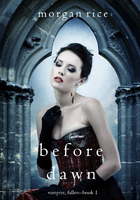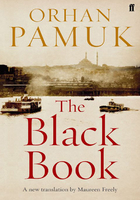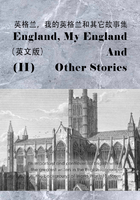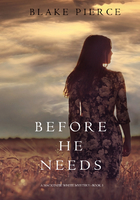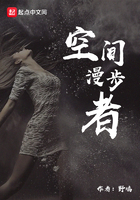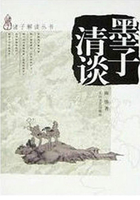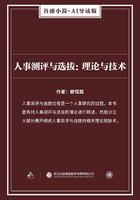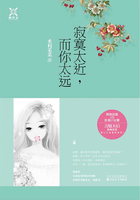We dedicate this book to all those who aspire to quality,
taste, and style, and to those who have achieved it!
-T.G. and K.M.
Tim Gunn
A GUIDE TO
QUALITY, TASTE & STYLE
The Lesson: Understanding and acknowledging who you are is the most important key to the content of your wardrobe. If you consider your wardrobe to be a sphinx, then the sphinx's riddle is surely, "who are you?" Only you possess the answer. Who you are can take us down the longest metaphysical road, so try not to get swept up in too much brooding self-examination and analysis. This doesn't have to be daunting. In fact, we believe this book can make it fun.
"Know, first, who you are;
and then adorn yourself accordingly."
-Epictetus
A NOTE BEFORE WE BEGIN
Dressed in white slacks and an off-the-shoulder sweater, Diane von Furstenberg uses an asparagus spear to tidy the couscous left on her lunch plate. We're sitting amidst Moroccan serving platters of marinated chicken and green salad at the gorgeous and exotic dining table in her enormous loft in the far West Village. She looks up at me and declares, "Tim, you must never lose your voice as an educator." That was her response when I first told her about this book, and it has resonated in me during each and every day of writing. Diane is a dear friend and colleague, and a huge supporter of design education. She is a wise counsel, an oracle, and I adore her for her always frank conversations and occasional outbursts of tough love.
This book is not intended to be an oracle, but it is intended to offer wise counsel and, I hope, inspiration. The centerpiece of the book is you, the reader. I ask that you rid yourself of boundaries and barriers in order to truthfully examine who you are and what your lifestyle is like with the same directness and tough love that Diane von Furstenberg extended to me. This book doesn't want to change you. You are who you are for a reason. I want the content of this book to enhance you, accentuating your positive aspects and mitigating your negative ones.
Unlike the designers I work with on television and my students at Parsons, you and I are not face to face. So don't harbor any concerns that I'm going to stare you down with shock or incredulity. I'll let you do that! The goal of this book is to provide you with the tools for an honest self-analysis. I want you to have an epiphany; that is, a moment when reading or reflecting that causes you to emit, "Eureka! I get it!" After your self-awareness is honed, then any actions in response to your epiphany are owned by you.
QUALITY, TASTE & STYLE
"Quality, Taste, and Style," is my operative tenet for most of what I do. It's another way of saying, "The Best." I aim to achieve that in everything from my work at Parsons to my critiques of the designers on television to fixing a meal or cleaning my apartment. Why take on an endeavor if you're not committed to doing your best? I hope to inspire you to better understand your own standards for quality, taste, and style, as defined by you.
None of this is easy. It requires commitment and discipline. While writing, I was constantly examining myself and took both pain and pleasure when putting to practice my own advice. Just this morning, I found myself presented with a clothing dilemma. In preparation for a ten-day trip, I had several suits and many shirts at the dry cleaner that wouldn't be ready for another day. A heavy wool suit loomed at me, but it was inappropriate for this unseasonably warm late-October day. My black suits struck me as being too dressy for those with whom I would engage, so separates-pants, sportcoats-seemed to be the answer. It struck me that a closet isn't a clothing store. It's a collection of items that reside there for the purpose of being chosen-or not. So why is it that I so frequently ponder and search, but come up empty, declaring, "I'll need to shop for X so that this dilemma can be reconciled"? That's the wrong approach. The correct approach is to make it work! I merely need to take my own medicine!
MAKE IT WORK!
"Make it work!" is an enormously useful expression. I remember the first time I used it. It was roughly six years ago in one of my classes at Parsons. I find that often students who struggle with an assignment are inclined to abandon the struggle and begin again. This practice unnerves me, because it's like playing roulette with one's work. What assurance does one have that the next spin of the wheel will be successful? Important learning occurs when a struggle is examined and analyzed, diagnosed, and a prescription offered. Ergo, make it work. I believe that we all benefit from the make-it-work practice.
So I suggest that we all come to terms with what fashion looks we gravitate toward and then analyze them for their particulars: items of apparel, color stories, accessories, even hair and makeup. Think of this process as being like playing with Colorforms. The items of apparel and accessories are discreet components designed to be mixed and matched. You're selecting and placing them on an image of you, so take into account your coloring, your height, and your silhouette. Look carefully at the proportion of the clothes in relation to your body and the proportions of each item in relation to the others. Where does the skirt's hem end on your leg? What about the jacket's shoulders and arm length? Where does the jacket hit the skirt? With each and every addition of an item, silhouette and proportion change. Be attentive to these myriad moving parts! Start asking these questions and more: Which fabrics do you feel most comfortable in? How do you accessorize? Where do you shop? What does your carriage say about you?
MILIEU AND ITS ATTENDANT EXPECTATIONS
Notice that this chapter is not titled "Who Are You?" That question strikes me as being quasi-confrontational. I'm reminded of the chilling scene in The Wizard of Oz when Dorothy, the Scarecrow, the Tin Man, and the Cowardly Lion stand before a stage of fire and brimstone, replete with voluminous clouds of spewing smoke. An apparition, the hydrocephalic emerald green Wizard, bellows at them, "Who are you?!" in a manner that challenges their mere existence. I love the fact that you exist!
Who you are embraces everything about you, from your family's origins to your predilections for particular films and music, to your fantasies and reveries, to your weekly routines. It's also your size, shape, and proportions, and your coloring. And it's the city or town in which you live, your home, and your friends and colleagues. It's milieu.
With milieu comes attendant expectations. How we dress sends a message about who we are, or at least how we want the world to perceive us. It's the semiology of clothes. Although I'm not a fan of Roland Barthes, I do subscribe to his theory that language is a self-contained system of signs. How we dress is a personal form of language; it is highly informed by our society and culture. So, as you face your wardrobe and prepare to dress for the day, project yourself onto a billboard in Times Square. How will people respond to that image of you, and what assumptions will they make about who you are?
While I acknowledge that who I am is a synthesis of my genetic makeup, my upbringing, my education, and my life experience, when I seriously home in on the essence of me, it's my professional life that defines me. Although a New Yorker for close to a quarter of a century, my sartorial roots are in Washington, D.C.
I love my hometown, but let's be honest, with the exception of the dazzling Kennedy years, Washington is a fashion desert. When I was younger, Brooks Brothers was my haberdasher of choice, and while I respect its market, it's hardly fashion forward. As a struggling sculptor in D.C., I survived by building architectural models and had a wardrobe of jeans, khakis, and T-shirts, which was appropriate enough. Later, I began teaching three-dimensional design at the Corcoran, so I paired the jeans and khakis with button-down oxford shirts. When I began working in the Corcoran's Office of Admissions, I traveled nationwide to recruit students, so I added neckties and a navy blazer to my wardrobe. Later still, with more maturity and responsibility, I added suits-my favorite at that time being a gray glen plaid. When I accepted a position at Parsons and moved to New York in 1983, the D.C. wardrobe followed. I wore it with no regard for the fashion circus that is New York. I wasn't out of place, because you can wear anything in the City That Never Sleeps, but I wasn't acknowledging the expanded possibilities that the city provided for my wardrobe, either. But, eventually, I did add Ralph Lauren to my vocabulary, partially because their flagship at 72nd Street and Madison Avenue is one of the most spectacular interiors on earth. Who wouldn't want to visit?!
For years and years, I was Associate Dean at Parsons. In that capacity, I wore a suit and tie every day-gray, grayer, and grayest. Frankly, it wasn't until my position at Parsons shifted to Chair of the Department of Fashion Design-temporarily I thought-that I came to sobering terms with who I am. It was sobering, indeed, to look at myself objectively and see a stuffy, buttoned-up old fart. I became very aware of Donna Karan's glares, Marc Jacobs's snickers, and Diane von Furstenberg's slight sniffs of disdain. Whether the position was temporary or not, I needed to be modernized. Still, I hesitated. But when I received a permanent appointment a year later…I went shopping! My goal was to find a black leather blazer. Why? Because it's hip and therefore modern, yet the soul of the blazer is, by definition, conservative.
Look, I am only too cognizant of the fact that I am not a Dolce & Gabbana or Dsquared2 kind of guy, so a leather blazer was an excellent transitional piece for me. I found a great one at Saks. It was Hugo Boss and it was-gulp-$800. I loved it. I bought it. And I left Saks in a retail daze, because 800 was my clothing budget for the year. I crossed Fifth Avenue to Rockefeller Center and stumbled into Banana Republic. I recognized that I was in a stupor, but I believed that I spotted a black leather blazer identical to the one I just bought. Was that possible? I moved forward and, sure enough, it was entirely possible. More important, the blazer was only $400! I bought it. I even opened a Banana Republic account and saved 20 percent, too. Then, I crossed Fifth Avenue, again, to return the earlier purchase. I was so proud of myself: mission accomplished and at a 50 percent savings! Most notable for me was that with that blazer, I experienced for the first time and first-hand the incredible virtues of black: It's sophisticated, slimming, and always in style. Furthermore, you don't have to think about "does this go with that?" It's black. It goes. So now I have a closet filled with black suits, black jackets, black shirts, black sweaters, and black shoes. I can't go back from black!
I'm not advocating that you wear the same thing in the same color day after day, but most of us are comfortable with a uniform. By "uniform," I don't mean a Stepford Wife blueprint of exacting sameness. I mean a cache of categories of separates that can successfully interact. My mother is constantly asking me how it can be that I wear so much black, adding, "And how many black turtlenecks must you own?" I know what I'm confident wearing, because I know that these articles of apparel look good on me. I'd say that I have five or six looks and iterations thereof. This makes selecting a look for the day a fairly easy exercise for me. I look at my itinerary, see which appointments I have and with whom, and dress for the highest level of expectation for that day.
I believe that most of us think the same way about our wardrobe; that is, we like having a uniform. Not one uniform, but a number of various looks, the components of which can be mixed around and accessorized. It's essential that you identify looks-not merely items of clothing, but combinations that will be worn together: the silhouettes, proportions, colors, and textures of which flatter and enhance you. Then, stick with them! Do not stray! And don't ever forget about fit!
Never forget that fashion, your fashion, cannot be comprehensively assessed without projecting it onto you; you need to try clothes on and look at yourself (and I prefer a three-way mirror for this purpose). When speaking about fashion and proportion, proportion includes the relationship between the clothes and your body; that is, what proportion is created between the hem of your skirt and your footwear, the bust-line of your dress and your neck and shoulders? If you observe these matters and can make the proportions work (and there's no reason why any one of us can't), then you're light years ahead of the pack.
As you look in that three-way mirror, there are some questions to ponder, some traps to avoid. But before we describe these traps, we want to talk about vocabulary-the words and phrases you need to ask yourself the right questions about your style choices.
HELPFUL WORDS AND PHRASES
I subscribe to the notion of "Learn the grammar, then add the vocabulary." Most people would attribute that statement to learning a foreign language. Indeed, fashion can be a foreign language. I am mindful of the power of vocabulary; it can unleash limitless quantities of defining and descriptive words and phrases that awaken the listener or the reader to new dimensions of understanding. (Whew! That sounds overly grand, doesn't it?) But vocabulary can derail, render impotent, and befuddle meanings or intended meanings. The words that we choose to critically analyze people, places, and things are especially important, and we must be responsibly cognizant of what we intend to say.
Let's take a fashion critique as an example, because I deal with this topic day in and day out. I ask my students to please not use the phrases, "I like it," and "I don't like it," because, frankly, who cares whether you like it or don't like it? Allow yourself to make a distinction between what appeals to you and what works for you. (If you love chartreuse but it looks dreadful on you, get your chartreuse fix around the house: perhaps some throw pillows would do it.) The critique should be about the qualities and/or inadequacies of what you see. Although everything we observe we see through a lens that is informed by our experiences, I must insist that you not personalize what you see.
Although we (you and I) are, indeed, shopping together, metaphorically that is, I caution my students to not shop when looking critically at fashion. I advise my colleagues similarly when watching a fashion show. One colleague railed at me after the Annual Parsons Fashion Show last May:
COLLEAGUE:
"That menswear was terrible!"
ME:
"You thought so? Why?"
COLLEAGUE:
"Why? It was awful! I wouldn't wear any of it!"
ME:
"Well, the students didn't design it with you in mind as the customer."
(And given the colleague, my last remark was an understatement.)
Is it surprising that my colleague had nothing at all to say about the womenswear? No, because he was shopping for himself!
So, let me suggest some opening phrases that can allow you to have a more meaningful exchange of thoughts and observations:
POSITIVE:
"I find this (insert item here) to be compelling, because…"
"I respond well to this, because…"
"I'm attracted to this, because…"
NEGATIVE:
"I'm not responding well to this, because…"
"This isn't working for me, because…"
When considering things that you respond to, let me add that it's important to express something, anything, even if you think you can't find the correct word or words. If your viscera are saying, "no," then listen.
Let me also suggest that you steer clear of statements that describe things that can't be changed, or are unlikely to change, and matters that don't advance the plot: "My foot is too long" is an example of the former and, "Everything I wear makes me look fat," is an example of the latter.
THE AGE TRAP: BABY JANE VS. THE SCHOOLMARM
The crimes of age and appropriateness are usually in the form of older women trying to look like teenagers. However, I have also witnessed too many cases of younger women dressing like matronly schoolmarms. The latter may be a matter of preference, although the question of "why?" eludes me. The former is simply sad. The only thing sadder is an older man, lifted and tucked, dyed and coiffed, and all dandied out. These Gustav von Aschenbachs make me want to weep.
For some reason, Manhattan's Upper East Side is the ne plus ultra incubator for grandma jezebels and teenyboppers. Although surgical and non-surgical forms of cosmetic enhancement can successfully transform a face, I have yet to learn of a procedure that can transform an Egyptian mummy into a wrinkle-free neonate. Just walk down Madison Avenue on a weekday afternoon and you'll see the parade of Nefertitis, some in miniskirts and bandeaus of spandex (plus a mink coat in winter), and others in Parisian couture, usually vintage Lacroix. It's all so horrifying to observe. But we should put these circus sideshows away, because they can't be fixed. It's too late and their commitment to this look is too powerful. Instead, let's look at what can be fixed.
Agnes Gooch, or the dowdy schoolmarm, is a look that makes younger women appear thirty years older. I work with some people in this category: A baggy dirndl is their idea of a party dress. The schoolmarm assumes the look and posture of a sack of potatoes, so it's not just the clothes that label her; it's her carriage, too. You can wear a plaid skirt, a basic white shirt, and a tailored jacket and still look youthful and even a little sexy. Remember our mantra: silhouette, proportion, fit.
THE COMFORT TRAP
Is it just my perception or have we really become a nation of slobs? It's a good thing that my maternal grandmother died in 1982 (she was always impeccable in a suit and hat), because the erosion of wardrobe protocols from the late '80s onward would have destroyed her. It's old news that sweats have become the de rigueur travel ensemble. And sadly, I'm used to LaGuardia Airport looking like a gymnasium-I don't even notice those fleece getups anymore. I merely wish that they were confined to airports and health clubs. Recently, I was at the theater with the divine and always superbly dressed Grace Mirabella, former editor-in-chief of Vogue and founder of Mirabella magazine. There we were in incomprehensibly expensive orchestra seats, and a couple scoots by us in matching workout suits. We were seeing Vanessa Redgrave in a Eugene O'Neill epic-not Cirque du Soleil. I wanted to shout, "Grace, don't look!" But I was too late.
And then there's the flip-flop phenomenon. Ugh. How is it that these slabs of rubber can proliferate so, even in winter? Where is this taking our society and culture other than into a long and winding fashion decline?
I'm not saying that you need to be trussed and harnessed like a rack of lamb, but consider semiotics: You're sending a message about who you are. I'm perfectly comfortable as I sit and write this, and I'm wearing jeans and a turtleneck. If firefighters were to burst into the room right now, I'd feel presentable. (This scenario is not implausible. It happened to me a number of years ago, when a neighbor thought that she saw smoke coming from one of my windows. It wasn't. And the firefighters couldn't have been more friendly and conciliatory.) But I will confess that I have my own slob ensemble-the world's most comfortable, but wrecked, T-shirts and drawstring workout pants-but it doesn't leave my apartment. And even I will troop over to the local deli for coffee, a bagel, and The New York Times wearing shorts and flip-flops, providing it's summer. But with very few exceptions, I dress to meet and greet and engage without feeling underdressed or overdressed for the occasion. Listen, I'm not just talking about shopping at Barneys or meeting Diane von Furstenberg for a drink. We engage with someone when we pay for something, so merely leaving your home is a set-up for engagement. Oh, shut up, Tim.
I believe that the concept of "casual Fridays" in the workplace wreaked more havoc on women than men. We know that too many men went beyond the boundaries of good sense, let alone good taste, when golf shirts, madras shorts, and flip-flops began appearing. Thankfully, there ensued a negative response and men stepped back to adjust. Many women, on the other hand, saw this concept as an opportunity to be casual and stay casual. I have nothing at all against the word "casual" and its meaning. But it is not to be conflated with inappropriate attire, such as pajamas at work. With precious few exceptions, the people with whom I work in the Department of Fashion Design are very well-dressed and put together. But I work with a lot of people at the University, too, and the same cannot be said about some of them. I attended a meeting recently at which someone (gender makes no difference in this case) was wearing flannel drawstring pants printed with soccer balls. Even deadpan me couldn't conceal my incredulity! I can't remember what was worn on top. The pants, alone, did me in.
And may I make one request of everyone? Please conceal your midriff. I continue to see far too many people in jeans (usually low-slung) with a little shrunken top that stops about an inch above the belly button. Unless you possess amazing abs and are attending a workout, please, please, please avoid this look at all costs. It's dreadful. And it's dreadful at any age.
THE COSTUME TRAP
I know of some people who use the content of their wardrobe to assemble some of the wackiest getups I've ever seen-and that's quite a statement coming from me. If it were a wacky ensemble that consistently evoked the same message, then that would be one thing, and perhaps even laudable (think Patricia Field or Anna Piaggi). But inconsistent wackiness is what I call "the costume trap." The people I know who belong to this category defend their fashion schizophrenia by stating that they hate being the same person day in and day out, adding that they're just having a little fun. Really? At whose expense? Your own!
Let's invoke semiotics, again. How do you want the world to perceive you? If your answer is, "I don't give a damn," then fine, do what you want to do. But if you're like most of us, you care what people think. If we're confident in how we look and someone chooses to reject our taste, then fine, reject us. We're still confident. I've had people look at me, raise an eyebrow, and sneer. "You look so, uh, starched." Thank you. I am starched! If, on the other hand, someone was to comment, "Whatever possessed you to wear a white tuxedo?" I would take serious pause, because I would know that I had a lapse in judgment. The same can be said for any outfit that causes you to check your calendar to see if it's October 31.
I am known to raise an eyebrow at many of the designs shown during the Paris couture season-especially the work of John Galliano. This usually results in some cries of anguish from my students, because many of them revere his work. I maintain that fashion isn't relevant if you can't get into a taxi wearing it, and so many of these Galliano creations couldn't fit into a moving van, let alone a yellow cab. My students retort, "But Galliano's work has a market and a place." I agree, but it's limited. Chacon à son go?t. On that topic, many fashion editors believed Sofia Coppola's Marie Antoinette would trigger a fashion frenzy. Huh? A frenzy for what, panniers? I don't think so. I don't believe that the women of the world want to dress like extras in a costume epic.
Ask yourself, "Am I wearing the clothes or are the clothes wearing me?" If the answer is the latter, then you're in the costume trap.
A NOTE ABOUT KATE MOLONEY
Who's Kate? Kate is a dear friend, a colleague, my Assistant Chair in the Department of Fashion Design at Parsons, and a spiritual partner. She is the only person I know whom I'd trust with the responsibility of partnering in the writing of this book. And I wouldn't have agreed to write it without her. A generation younger than I, Kate embraces the world in a way that I can't even comprehend. She is a perpetual student of society and culture, and is among the few truly well-read people I know. Furthermore, she possesses a fabulous fashion sense. "Quality, Taste, and Style" is Kate!
We hope to challenge you, provoke you, and cause you to question your assumptions. Our goal is for you to be unflinchingly confident in who you are. Own that person. Own your look.
The Blind Spot: Examining "who you are" is not intended to be an opportunity to morph from Agnes Gooch to Barbarella. It's not about shaking your underpinnings or creating a Hyde from a Jekyll. You should consider your transformation to be an enhancement, not a new identity through a sartorial version of the Witness Protection Program.

